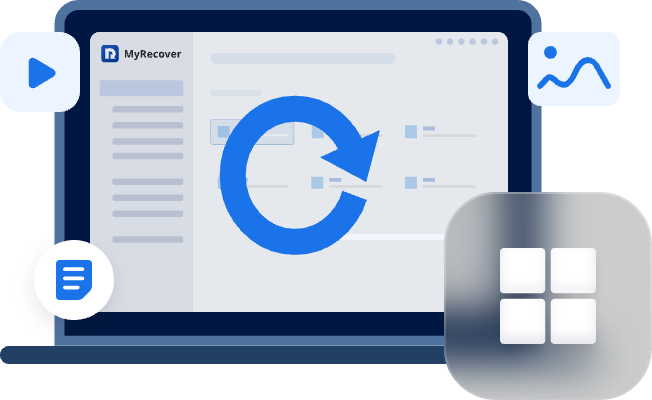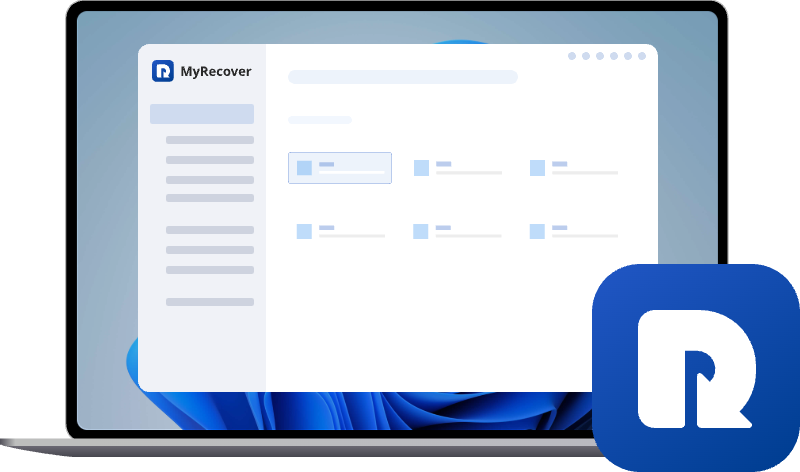How to Recover Data From Pen Drive Asking for Format: 2 Methods
When your pen drive or USB flash drive suddenly says it needs to be formatted, it usually signals file system corruption or other logical failures. This guide covers proven ways to recover data from a flash drive that asks for formatting—without losing your files. Whether caused by improper ejection, malware, or bad sectors, we’ll show you how to retrieve and access your data again before formatting.
Pen Drive Asking for Format Suddenly! Why?
If you're using a brand-new pen drive or USB flash drive, it's common for the system to prompt you to format the drive before use. This happens because the storage device may not yet have a compatible file system (like FAT32 or NTFS) that your operating system can recognize. In this case, formatting the drive is safe and won’t result in data loss, since no files exist on it yet.
However, if a pen drive that previously stored data suddenly shows the message "You need to format the disk in drive before you can use it", this is a warning sign. It usually means the file system is corrupted or the drive has encountered logical errors. Formatting at this point will erase all existing data, which is why it’s crucial to learn how to recover data from pen drive asking for format.
Common Reasons Your Pen Drive Prompts for Format After Usage
Several factors can lead to this unexpected format prompt, including:
- File system corruption due to improper ejection or sudden power loss
- Virus or malware infections that damage the drive structure
- Interrupted read/write operations during file transfer
- Unsupported file systems when switching between operating systems
- Bad sectors or physical deterioration on the flash memory
How to Recover Data From Pen Drive Asking for Format?
If your pen drive contains important files and you’re being asked to format it, don’t proceed with formatting since it will wipe all your files stored on the flash drive Instead, use a reliable data recovery tool to scan the drive and extract recoverable files. Only after recovery should you format the drive to restore normal functionality.
For data recovery from pen drive that needs to be formatted (without any backup enabled previously), you have the following two options: Microsoft Windows File Recovery tool (command-based) and MyRecover (GUI).
Method 1: Use Microsoft Windows File Recovery (Command Line Tool)
Microsoft Windows File Recovery is a free, official tool developed by Microsoft to help recover lost files from drives suffering from accidental deletion or formatting. It works via command-line interface and supports NTFS, FAT, and exFAT file systems. While powerful, it requires basic familiarity with command syntax.
Step 1: Download and install Windows File Recovery from the Microsoft Store.
Step 2: Open "Command Prompt"as administrator (press win+x, and select Command Prompt admin).
Step 3: Identify the source (pen drive) and target (recovery folder) drive letters.
Step 4: Run the command: winfr F: E: /regular (replace source drive F: and target drive E: accordingly).
This command will scan F: drive and recover all found files to E drive. To recover specific types of files like mp3, you can add "/n" parameter to filter those music files: winfr F: E: /Regular /n *.mp3
Step 5: Wait for recovery to complete. Then you will be prompted to check or view the recovered data in the destination folder. At this point, press "Y" or "N" on your keyboard to make your choice.
Method 2: Use MyRecover (Graphical User Interface)
Unlike Windows File Recovery, which requires command-line knowledge, MyRecover is a better data recovery program for users who prefer a simpler, faster, and more visual recovery experience. It’s ideal for both beginners with no technical experienceand advanced users.
- ★Key Advantages of MyRecover over Windows File Recovery:
- No command-line usage—fully visual, point-and-click interface.
- Support 1,000+ file types, including documents, images, videos, emails, and more.
- Dual scan modes: Quick Scan for speed, Deep Scan for thorough recovery
- Real-time file preview before recovery.
- Support NTFS, FAT32, exFAT, ReFS in Windows 11/10/8/7 & Windows Server.
- Handle with more complex data loss cases like OS crash, formatted, RAW, corrupted or deleted drive.
- Compatible with all storage devices: USB drives, HDDs, SSDs, SD cards, etc.
Step 1: Install MyRecover on your computer.
Step 2: Launch the tool and select the formatted pen drive from the drive list.Click "Scan" to automatically begin scanning for lost data.
Step 3: Once the scanning is done, you can preview files, then select those you want to restore.Finally, click "Recover"button.
Step 4: Choose a different drive to save the recovered files. Do not choose the original pen drive to avoid data overwriting.
Additional Tips: How to Fix USB Flash Drive That Says It Needs to be Formatted
Once you’ve successfully recovered data from pen drive asking for format, you can proceed with fixing the USB flash drive to make it usable again. Below are several effective methods to resolve the "You need to format the disk before you can use it" error:
Method 1: Run CHKDSK to Repair File System Errors
CHKDSK (Check Disk) is a built-in Windows utility that scans a drive for file system errors and bad sectors. It can automatically detect and fix issues that might be preventing your USB flash drive from functioning properly.
Step 1: Connect the USB drive to your PC.
Step 2: Open "Command Prompt" as administrator.
Step 3: Type the following command and hit Enter:
chkdsk g: /f /r
Replace g: with the actual drive letter of your USB.
This command will scan for and fix file system errors (/f) and attempt to recover readable data from any bad sectors (/r) on the drive.
Method 2: Try Disk Error Checking in File Explorer
If you’re uncomfortable using command-line tools, Windows also provides a graphical alternative to scan and fix drive errors.
Step 1: Open "File Explorer" and right-click your USB drive.
Step 2: Choose "Properties > Tools > Error Checking > Check".
Step 3: Follow the on-screen prompts to repair the drive.
Method 3: Reinstall the USB Drivers
If driver issues are preventing your USB drive from functioning correctly, reinstalling the driver can help.
Step 1: Press "Win + X", then select "Device Manager".
Step 2: Expand "Disk drives", right-click your USB, and choose "Uninstall device".
Step 3: Unplug and reconnect the USB to reinstall the driver automatically.
Method 4: Format the Drive After Recovery
If the drive is still inaccessible after repair attempts, you may need to format it to restore full functionality.
Step 1: Right-click the USB drive in "Disk Management" and choose "Format".
Step 2: Select the file system (usually "FAT32" or "exFAT"), and click "OK".
If you fail to format the pen drive in Disk Management, you can use DiskPart in Command Prompt to force a format: Open Command Prompt as an administrator. Then, type each of the following commands and press Enter after each one.
- diskpart
- list disk: display all connected disks on your system.
- select disk X: replace X with your pen drive’s disk number
- clean: remove all partitions and data.
- create partition primary: make a new partition.
- format fs=FAT32 quick: or use format fs=NTFS quick for NTFS.
- assign letter=K: give the drive a letter that is not used by other drives.
- exit: close DiskPart, then close Command Prompt.
Summary
So, how to recover data from pen drive asking for format? Here you can find two effective recovery tools- Microsoft’s command-line Windows File Recovery andthe intuitive GUI of MyRecover.If you have backed up the pen drive data using Windows File History or Backup and Restore Tool (Windows 7), you can also easily restore them from the available backup.
After securing your data, follow the provided repair methods to restore the drive to full functionality, and always remember to back up important files and safely eject your USB device to prevent future issues.


